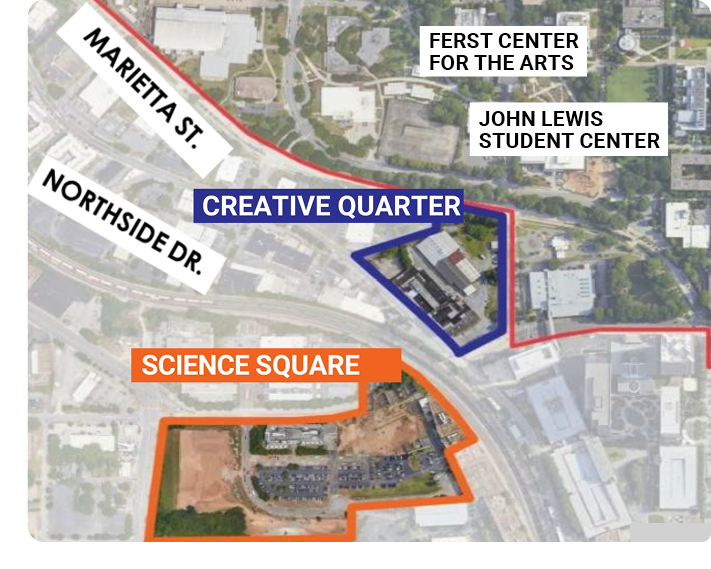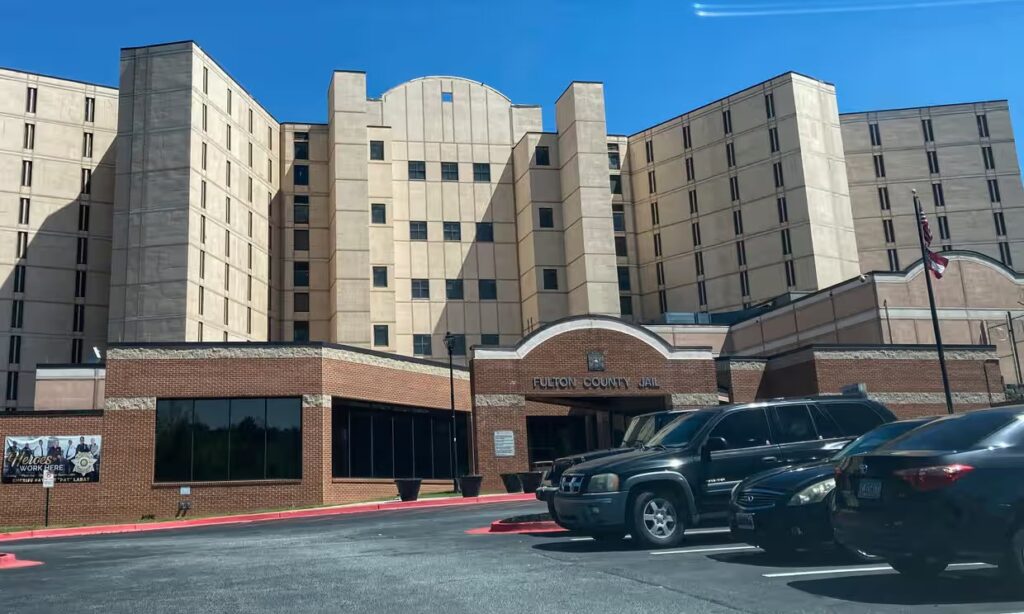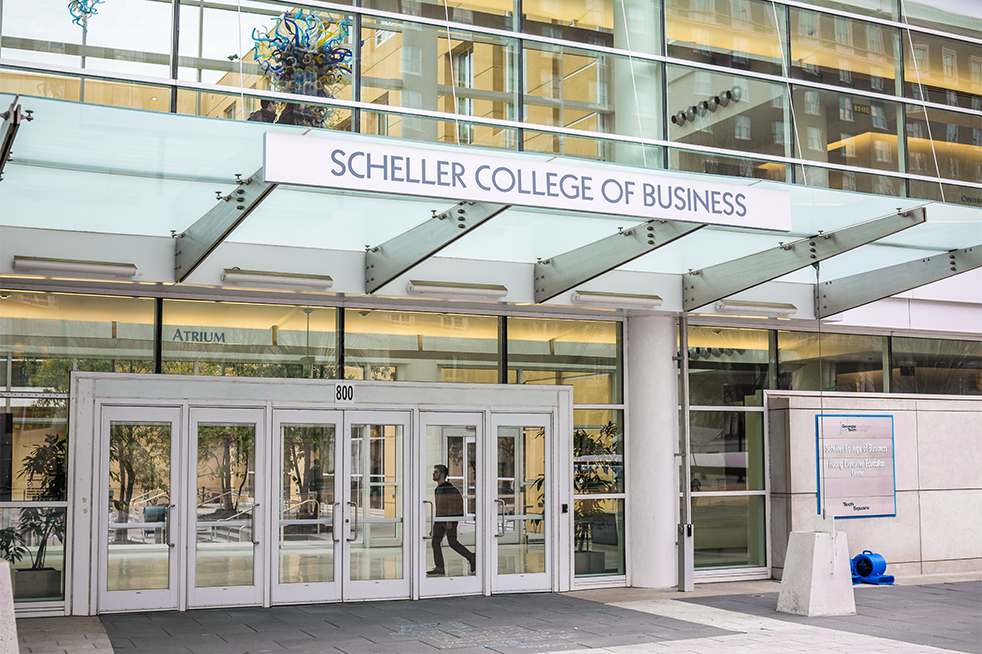Posted on 15 November 2024.

Construction is underway on the Pathway to Progress monument near the student center, across the main pedestrian pathway, where hundreds of women who have contributed to Tech’s campus will be honored. The installation aims to celebrate the impact of these individuals and preserve their legacy for future generations.
The monument will display 2,946 mirrored, inscribed tiles in a mosaic that honors women honorees by depicting each of their micro-biographies on more than 160 tiles. The project started three years ago with Andrea Laliberte, BS IE ‘82, MS IE ‘84, who, after retiring and working with Tech, reached out to President Cabrera to have something on campus that honors and celebrates women with relations to GT.
“She wanted to acknowledge the impact they’ve made on campus and in the world after graduation. Her goal is to honor these women and future generations, not just by looking at history but by focusing on the present and the future impact that alumnae have achieved. It’s very aspirational and forward-looking rather than solely historical,” said Janet Kinard, vice president of engagement at the Alumni Association.
The selection process for the honorees was guided by the administration, alumni association, the library/archives and an Advisory Committee, composed of women leaders on campus. For the historical “Women at Tech” honorees, the design team and library/archives worked with a historian and women’s studies researcher Beth Gibson who curated the initial 93 honorees. For the initial 70 “Women from Tech” honorees, the Alumni association created a selection committee, which is made up of only engaged alumni, to recommend honorees to the Advisory Committee.
For the “Women from Tech” list, “The qualifications and nomination application was created and vetted by the steering committee. Most questions around it relate to Tech’s values and embracing progress and service. One of the questions included was, ‘What impact did women have in their industry,’” Kinard stated.
Much of the selection process worked in tandem with researchers and staff at the Archive office. Alexandra Mcgee, another university archivist who worked in Massachusetts Institute of Technology’s archive offices before Tech’s, noted a common theme between women in STEM institutions and male-dominated industries.
“This is the case in STEM in general. Historically, it’s a story of many white men, and we want to expand our thinking of who we talk about at Georgia Tech and who we celebrate. With university archives, it’s about thinking about what stories we need to be telling more and highlighting those. For this particular monument, I was brought in to provide guidance and feedback and also research. I helped the design team research a lot of Georgia Tech’s history,” McGee stated.
The honorees are divided into two groups: “Women From Tech” and “Women at Tech.” The “Women At Tech” consisted of women who marked major milestones in Tech’s history, including the first women to enroll, compete in sports and hold elected positions in the Student Government Association (SGA) and Reck Club.
“There’s an illuminating story about the first female Buzz, Susan Davis. She recalled ”In costume, judges don’t know if you’re female or male. When I won, the coach said, we’re thinking we might need a Buzzette.’ I said ‘ I don’t want to be told that.’ I didn’t try out for Buzette.” recounted Merica May Jensen BS MGT ‘08, MS ARCH’11, the monument’s project architect and artist.
The “Women From Tech” category covers a wide range of accomplishments, including authors, astronauts, CEOs, elected politicians, and leaders in male-dominated industries.
“One honoree is an aerospace engineer from Seattle who led in the aerospace industry 30 years ago, a field that was and is still predominantly male. Her story, along with others, is truly inspiring,” Kinard continued.
Another “Women at Tech” honoree includes Dorothy Crosland, Crosland Tower’s namesake and the former director and dean of the library from 1927 to 1971.
“At President Blake Van Leer’s request, she surveyed colleges and universities to determine which offered engineering and architecture degrees to women. Discovering that Georgia was the only state that did not have a private or public engineering or architecture school for women, she wrote a persuasive letter to Rutherford Ellis, education committee chair for the board of regents, urging them to allow women to attend Tech. As a result, Georgia Tech admitted its first women students,” the archive website states.
Another honoree is Carole Elizabeth Moore, who has held several administrative positions since her arrival at Tech in 1980, including Assistant Dean of Students, Associate Dean of Student Affairs, Director of Academic Services for the Georgia Tech Athletic Association, and Assistant Vice Provost for Academic Affairs, along with being a professor of ancient and medieval history in the School of History, Technology, and Society.
Moore has dedicated efforts to supporting and advocating for women on campus, including working on the Title IX Committee, serving as an advisor to the Society of Women Engineers, and helping to form four sororities on Tech’s campus. Moore also advocated for child care and made recommendations to create facilities on campus for female students and faculty when those resources did not exist.
Jensen described how women who faced adversity found creative ways to challenge and navigate institutional barriers.
“Like with women in the workforce today; students faced overt and subtle forms of unwelcoming treatment . For instance, one woman honoree would go to class late because if she arrived early, no one would sit by her. Another, Shirley Clements Mewborn, one of the first students, had a professor say “he was not going to have any women in his class”, to which Mewnborn responded, “Sir, that’s fine, we’ll just find ourselves another class,” Jensen recounted.
Another honoree, Jean McDowell Ray CHEM ‘65, wanted to study Chemistry at a time when that major wasn’t offered to women. After applying for a change of major using only her initials and was accepted. Despite backtracking and refusing to admit her after they found out she was a woman, she was eventually able graduate with a degree in Chemistry. A year after her graduation, all majors were open to women.
Through talking with the honorees and examining their stories, the Alumni Association recognized similar obstacles for women at Tech through the years.
“The barriers that many of them ran up against were, in the early days, being the only woman in the room. Most of the women talked about being one of few but said that once they found their champion, whether it was a fellow student or professor, that helped them navigate the isolation,” Kinard said.
Despite the obstacles and detachment women had to overcome on campus, there was a common theme of determination for education and knowledge.
“The trajectory you see is women were very determined to have their seat at the table and pursue the education they were passionate about, whether or not there was a lack of resources or the space wasn’t ideal. One of the stories we came across was that facilities were not built for women. They had one women’s bathroom and all the female students knew each other because they would see each other in this one bathroom. So, it was their community that sustained them and allowed them to keep going and pursue their education even when there were people that were essentially making their lives really hard to pursue their education here,” McGee said.
Although construction is set to be completed next January, the living monument will progress each year as more honorees are added.
“Names will be added, and people will be nominated for consideration. Any female student could end up there. It allows young women here to think, ‘What is your story? What is your legacy and wish for Georgia Tech?’ I think there is a contemplative component to the installation,” McGee said. “It’s special and unique because it highlights that when we sit here, when we think about these things, we realize we’re in the middle of it. We’re very much a part of the Georgia Tech story for women.”
The post The monumental women of the Institute’s history appeared first on Technique.





